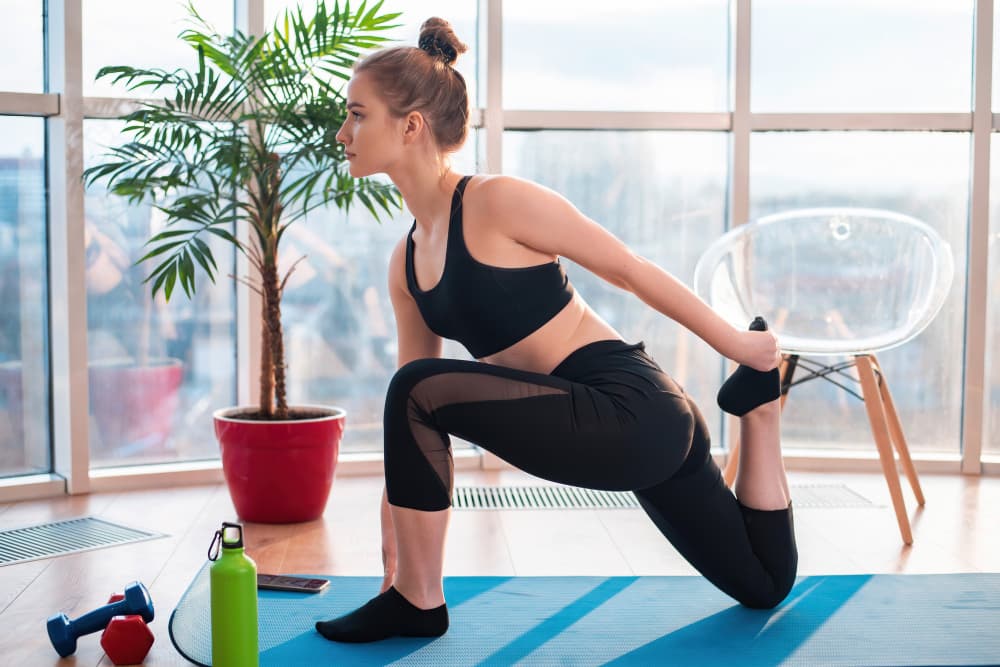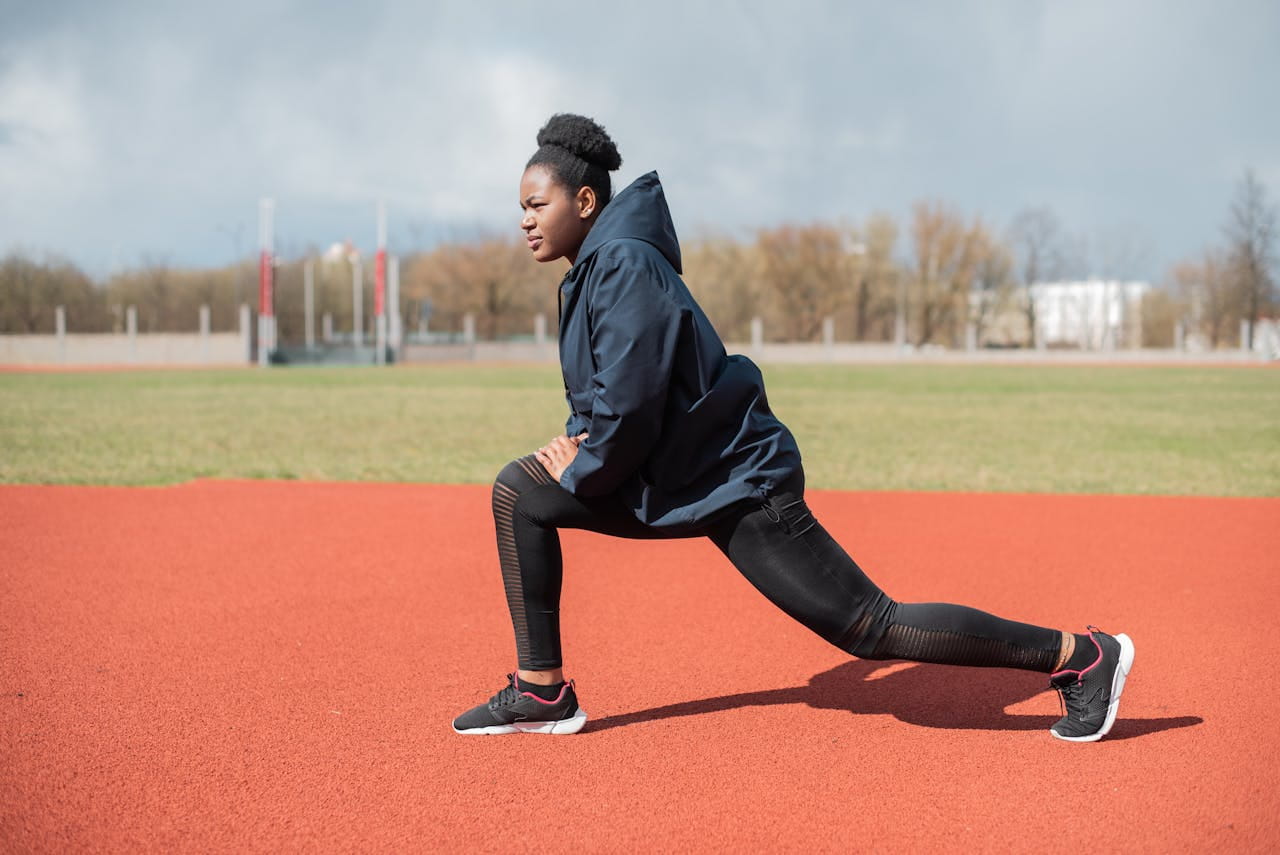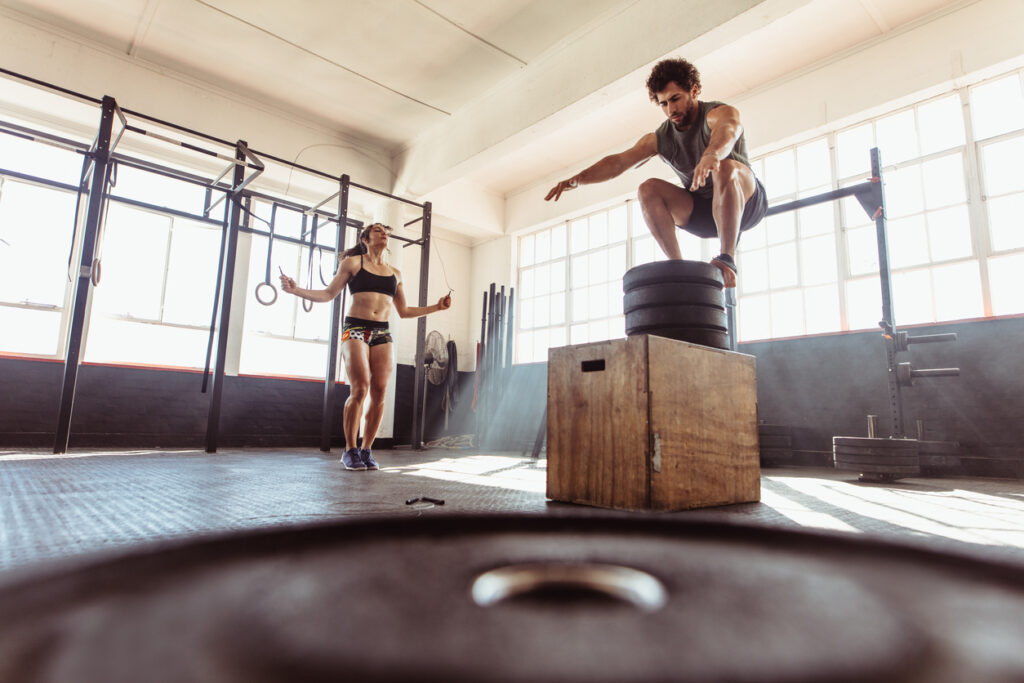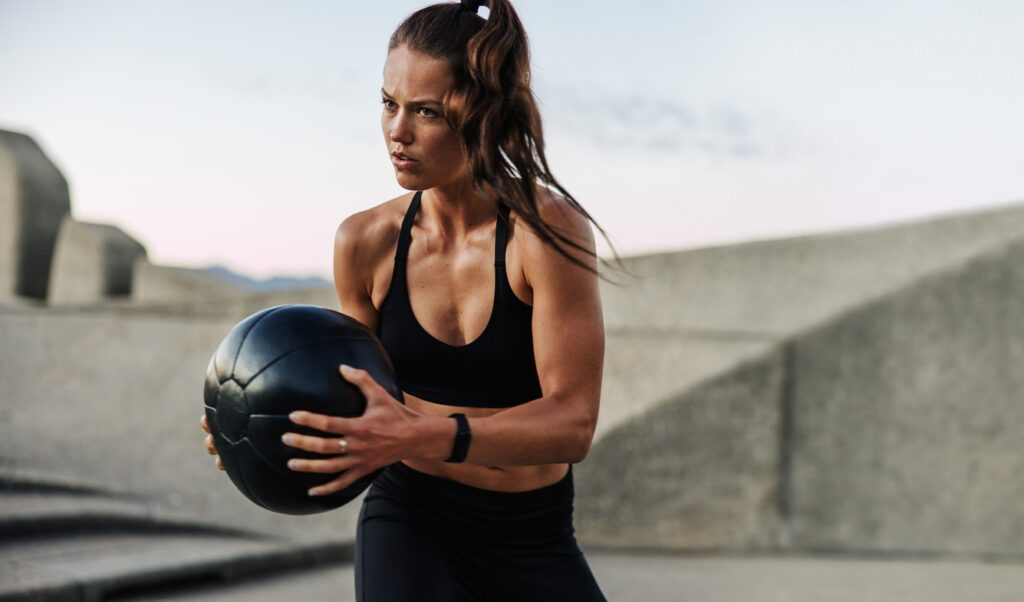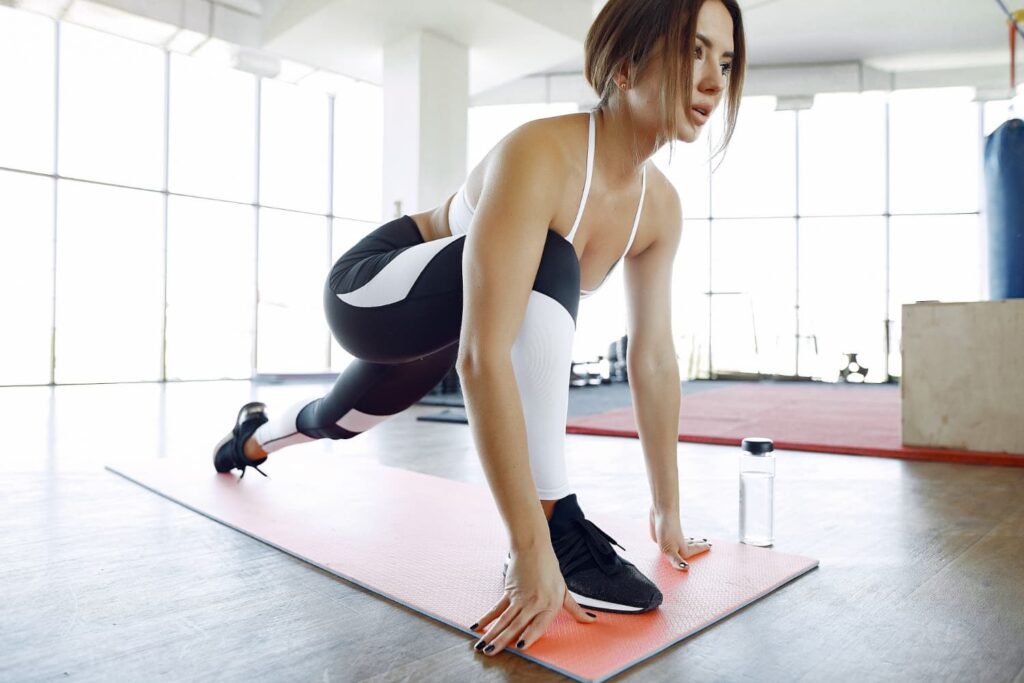
Summary
Welcome / Welcome / Tips for getting started / Lunge exercise: how to do it correctly?
Lunge exercise: how to do it correctly?
Looking to improve your strength and balance through sport? Lunges are the perfect exercise for strengthening your legs and core. In this article, you'll learn how to perform lunges correctly and safely.
How to properly perform the lunge exercise
Discover the essential techniques to avoid injuries and maximize results. Also learn the different variations of the lunge exercise to vary your workouts and target different muscles.
To properly begin a lunge exercise, follow these simple but essential steps:
- Feet hip-width apart : Make sure your feet are in line with your hips. This stable position gives you a solid foundation to avoid imbalances.
- Back straight and looking forward Keep your back straight, without arching or rounding. Focus on a straight point in front of you to maintain balance and concentration.
- Hands on hips or holding weights : You can place your hands on your hips for stability or hold dumbbells on either side to add resistance.
Lunge Movement
Now that you're well positioned, here's how to perform the lunge movement:
- Bring one leg forward and bend both knees : Take a big step forward with one leg. Bend both knees to lower your body. The back knee should go down towards the ground.
- Descend until the back knee almost touches the ground Continue to descend until your back knee is very close to the ground, without touching it. This ensures that you have sufficient range of movement.
- Keep the front knee aligned with the ankle As you descend, make sure the knee of your front leg stays in line with your ankle. To prevent injury, keep it away from your toes.
- Return to initial position : Push on your front heel to return to the starting position. Repeat the movement alternating legs for a balanced workout.
By following these steps, you will perform lunges efficiently and safely, maximizing the benefits for your muscles and stability.
Tips for correct execution
To succeed in your lunges and maximize profits, follow these execution tips:
- Keep your back straight throughout the movement : Correct posture is crucial. Keep your back straight, your shoulders back and your chest open. This helps prevent injuries and properly engage the targeted muscles.
- Do not let the front knee go beyond the toes : As you lower into a lunge, make sure your front knee stays in line with your ankle. Don't let it go past your toes, this reduces pressure on the knee joints and prevents injuries.
- Maintain regular breathing : Breathing is often overlooked, but it is essential for effective exercise. Inhale on the way down and exhale on the way up. Controlled breathing helps maintain your pace and endurance.
To ensure perfect execution, here are a few additional tips:
- Looking forward : Keep your eyes focused on a point in front of you. This helps maintain your balance and alignment.
- Engage the core : Contract your abdominals throughout the movement to stabilize your body and protect your spine.
- Use a mirror : If possible, do your lunges in front of a mirror. This helps you correct your posture and ensure your knees stay aligned.
By following these tips, you will optimize your lunge technique, reduce the risk of injury, and improve your overall performance.
Lunge variations
Diversify your workouts and target different muscle groups by trying these lunge variations:
Front lunges
Front lunges are the classic version:
- Movement Take a big step forward, bend both knees and lower yourself until the back knee is close to the ground.
- Main targets : Quadriceps and glutes.
- Trick : Make sure your front knee stays in line with your ankle.
Back lunges
Back lunges work more on the buttocks and hamstrings:
- Movement : Step one leg back and bend both knees to descend, with the back knee coming closer to the floor.
- Main targets : Glutes and hamstrings.
- Trick : Keep your weight on the front heel for better stability.
Side slits
To work the inner thighs and improve balance:
- Movement : Take a large step to the side and bend the knee of the advancing leg, keeping the other leg straight.
- Main targets : Adductors and quadriceps.
- Trick : Keep your back straight and your gaze forward.
Lunges with trunk rotation
Add a twist to engage your core and improve stability:
- Movement : Moving forward in a lunge, turn your torso towards the front leg.
- Main targets : Abdominals, quadriceps and glutes.
- Trick : Keep your hips stable and only rotate your torso.
These variations allow you to target different muscles and keep your workouts varied and interesting.
What muscles work lunges
Lunges are a comprehensive exercise that works multiple muscle groups. Here are the main muscles worked:
Main muscles used
- Quadriceps Quadriceps: Located at the front of the thigh, the quadriceps are put under great strain during ascent and descent. They play a key role in knee extension.
- Hamstrings These muscles at the back of the thigh are engaged during the descent and help to stabilise the knee and hip.
- Glutes The gluteal muscles, particularly the gluteus maximus, are activated to propel the body upwards and maintain balance. In fact, lunges are one of the most popular best exercises for glutes.
Secondary muscles used
- Calves The calves stabilise the ankle and help maintain balance during movement.
- Abdominals The abdominal muscles are engaged to stabilise the trunk and maintain correct posture throughout the exercise.
- Lumbar The lower back muscles work in synergy with the abdominal muscles to stabilise the spine and maintain body alignment.
By incorporating lunges into your routine, you effectively target these muscles, improving both your body's strength and balance.
Benefits for stability and balance
Lunges are not only an excellent exercise for strengthening muscles, they also offer numerous benefits for stability and balance. Here's how:
Core strengthening
Lunges intensely engage the core muscles, including the abdominal and lumbar muscles. By stabilising your body during the movement, these muscles work hard to maintain your balance. A strong core is essential to avoid injury and improve performance in other exercises.
Improved coordination
Lunges require precise coordination between different parts of the body. Each movement involves synchronization between the legs, core and arms (if using weights). This increased coordination improves your general motor skills and agility.
Injury prevention
By strengthening the stabilising muscles and improving coordination, lunges help prevent injuries. Improved stability reduces the risk of sprains, falls and injuries linked to sudden movements. What's more, improved balance can correct muscular imbalances, reducing stress on the joints.
These benefits make lunges a must-have exercise for anyone who wants to strengthen their stability and balance while building muscle strength.
How much weight do you need to successfully do bodybuilding lunges?
Weight selection for lunges depends on your fitness level and strength training experience. Here are recommendations for each level:
Beginners
- Use body weight to start : If you're new to doing lunges, start without weights to master the technique.
- Add light weights (1-2 kg) gradually Once you're comfortable with the movement, add light weights to increase resistance and intensify the workout.
Intermediaries
- Use 5-10 kg dumbbells : If you already have some experience, move on to moderate weight dumbbells. This allows the muscles to be further stimulated and progressed.
- Increase weight based on progression : Listen to your body and gradually increase the weight used to avoid sores and continue to build strength.
Advances
- Use dumbbells of 10-20 kg or more : For experienced exercisers, heavier dumbbells are recommended. This helps maximize muscle development.
- Consider using weighted bars : For an even greater load, use a barbell with weights. Be sure to maintain impeccable technique to avoid injury.
Tips for Choosing the Right Weight
- Start light and gradually increase : Always start with a light weight to assess your comfort and technique before increasing the load.
- Listen to your body and avoid overload : Don't push beyond your limits. Excessive pain or imbalances are signs that you need to reduce the load.
- Consult a coach if necessary : A professional can help you determine the ideal weight and correct your technique for optimal results.
By following these recommendations, you can adapt the intensity of your lunges according to your level and progress safely.
Conclusion
Lunges are a powerful exercise for strengthening leg muscles and improving balance. By mastering the technique and incorporating variations, you maximize the benefits. Choosing the right weight is crucial to progress safely.
To succeed, follow the posture and breathing tips. Lunges mainly work the quadriceps, hamstrings and glutes. They also offer benefits for stability and injury prevention.
Test HIIT at DRIP!
Want to diversify your training? Join us in our DRIP studios new gyms in Paris 10 And Paris 8 ! You'll feel right at home, with more equipment available to help you excel.
At DRIP, the concept is simple: 7 different exercises, 3 rounds, 1 minute per exercise. Do the exercises without a break to maximize your calorie burn! Our coaches, our dynamic playlists and our immersive lights will create a unique atmosphere to motivate you.
Whatever your sporting level, you are welcome at DRIP!
Ready to sweat? Come to our Parisian studios in Monceau or Grands Boulevards. You will love to hate us! ❤️🔥
Share
Tagged
Read also
follow us
on instagram
To follow all our news,
take advantage of our tutorials and participate
in our many competitions.
BREAKING NEWS!
Receive our newsletter.
